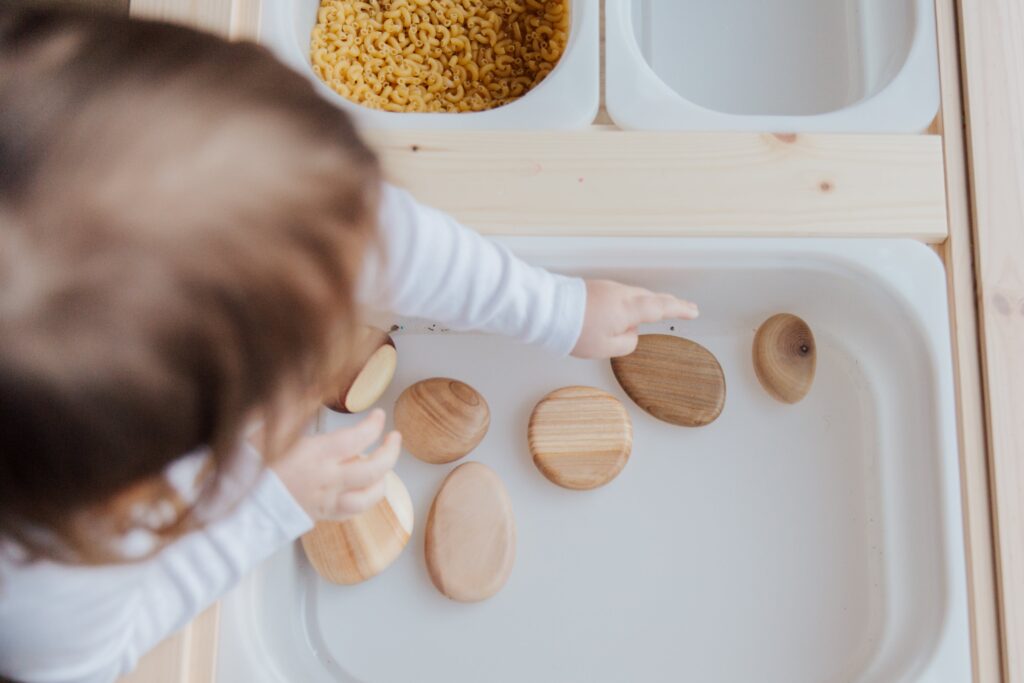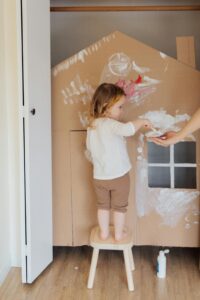Safe kid games – Learn more with Healthier Baby Today! As a parent or caregiver, you want to provide your toddler with the best opportunities for growth and development while ensuring their safety.
One of the most enjoyable ways to achieve this is through playtime. Playing safe and age-appropriate games with your toddler fosters their physical and cognitive development and strengthens the bond between you and your child.
This article will explore a comprehensive guide on playing safe kid games with your toddler.
From choosing suitable matches to creating a secure play environment, we’ll provide you with tips and strategies to make playtime fun and safe.
Whether you’re a first-time parent or an experienced caregiver, these insights will help you confidently navigate the world of toddler play.
So, let’s embark on this journey of discovery as we delve into the joys of toddler play and the essential steps to ensure both safety and enjoyment for your little one.
Table of Contents
Setting the Stage for Safe and Fun Toddler Play

Toddlers are at a rapid growth and exploration stage, and play is integral to their development. However, ensuring that playtime is safe and enjoyable requires thoughtful preparation.
This section will discuss the crucial steps to set the stage for safe and fun toddler play:
1. Understanding Your Toddler’s Development
The first step in creating a safe play environment is understanding your toddler’s developmental stage.
Toddlers are typically between 1 and 3 years old, and their abilities and interests change rapidly during this period.
Please pay attention to their motor skills, cognitive development, and social skills to choose appropriate games and activities.
2. Safety First
Safety is paramount when it comes to toddler play. Identify hazards in your home and play area, such as sharp objects, small items that could be choking, or tripping hazards like loose rugs.
Baby-proofing your home and other areas where your toddler will be is essential to prevent accidents.
3. Designating a Safe Play Space
Create a designated play area for your toddler within your home. This space should be free from potential dangers and distractions.
Use baby gates to limit access to unsafe areas and ensure that electrical outlets are covered.
4. Choosing Age-Appropriate Toys

Select toys and games suitable for your toddler’s age and stage of development.
Look for toys made of non-toxic materials and avoid those with small parts that can be easily swallowed. Check for age recommendations on toy packaging.
5. Constant Supervision
Never leave your toddler unattended during playtime. Toddlers are naturally curious and can get into trouble quickly.
Being present and attentive ensures their safety and allows you to guide their play.
6. Teaching Gentle Touch and Sharing
Use playtime to teach your toddler about gentle touch and sharing. Please encourage them to play nicely with others and explain the importance of being kind and considerate.
7. Setting Up for Success
Prepare for playtime by having all the necessary supplies ready. Whether building blocks, art materials, or outdoor toys, having everything at hand saves time and keeps your toddler engaged.
8. Limiting Screen Time
While some educational apps and shows can be beneficial, limiting screen time for toddlers is essential. Interactive, hands-on play provides more significant developmental benefits.
Matching Games to Your Toddler’s Developmental Stage
Selecting games that align with your toddler’s developmental stage is vital. Toddlers undergo rapid changes in their cognitive and physical abilities.
Simple games like peek-a-boo or stacking blocks are ideal for younger toddlers and are safe kid games.
As they grow, introduce activities that challenge their problem-solving skills and creativity. Age-appropriate games promote engagement and skill development.
Avoiding Choking Hazards and Small Parts
Safety should always be a top priority. Ensure that safe kid games and toys are free from small parts that could pose choking hazards.
Pay close attention to labels and warnings on toy packaging to safeguard your toddler from potential harm. Regularly inspect toys for loose parts or wear and tear.
Supervising Playtime

Supervision is essential during playtime. Toddlers are naturally curious and can quickly get into situations that may lead to accidents.
Stay attentive and present, guiding your child through play and ensuring their safety. Constant supervision is crucial for peace of mind, even in a safe play space.
The Importance of Constant Supervision
Toddlers are curious and energetic, and their actions can change instantly. That’s why constant supervision during playtime is paramount.
It allows you to react quickly to any potential hazards, ensuring your child’s safety and providing a secure environment for exploration.
Preventing Accidents and Promoting Safety
Accidents can happen unexpectedly, but many can be prevented with vigilance. By staying watchful, you can intervene before accidents occur.
This proactive approach prevents injuries and teaches your toddler about safe play practices, instilling good habits from an early age.
Creating a Safe Play Space
Designating a safe play space is a critical component of childproofing your home. This area should be free of potential dangers like sharp objects, small choking, and tripping hazards.
Use safety gates, outlet covers, and furniture to create a secure play zone where your child can explore and learn without risk. Regularly inspect this space to ensure it remains hazard-free.
Designating a Secure Area for Play

Creating a secure play area for your toddler is fundamental to ensuring their safety during playtime.
Choose a designated space within your home to monitor their activities efficiently.
Use safety gates or barriers to limit access to potentially hazardous areas, such as kitchens or stairs, and provide a controlled environment where your child can confidently explore.
Essential Baby-Proofing Measures
Baby-proofing your home is crucial to safeguard your toddler during play.
Install safety locks on cabinets and drawers that contain hazardous materials or objects such as knives or detergents—secure heavy furniture to the wall to prevent tipping accidents.
Cover electrical outlets with safety plugs, and use corner guards to soften sharp edges. These measures help minimize potential risks within your toddler’s play area.
Safe Materials for Play
When selecting toys and play materials for your toddler, prioritize safety. Choose items made of non-toxic materials tested and certified as safe for children.
Ensure that toys do not have small parts that could be a choking hazard. Regularly inspect toys for any signs of wear and tear, and remove any damaged or broken items from your child’s play space to prevent accidents.
Prioritizing safe materials ensures your toddler can engage in play without unnecessary risks.
Selecting Non-Toxic Toys and Materials
When choosing toys and materials for your toddler, always opt for those made from non-toxic materials.
Look for products that have passed safety tests and meet relevant standards for children’s products.
Toys made from safe materials are less likely to contain harmful chemicals and are better for your child’s health and well-being.
Ensuring Play Items Are Swallowing-Safe
Toddlers often explore the world by putting objects in their mouths. Avoid toys with small parts that could be easily swallowed or lodged in a child’s throat to prevent choking hazards.
Following age recommendations on toy packaging is crucial, as they often indicate whether a toy is appropriate for your child’s age and developmental stage.
Interactive and Educational Games

Interactive and educational games provide valuable learning opportunities for toddlers.
These games engage their minds and help develop essential skills, such as problem-solving, creativity, and social interaction.
Consider safe kid games like building blocks, puzzles, or shape sorters, which encourage cognitive development while keeping your toddler entertained and learning.
Ways on How To Play Fun and Safe Kid Games With Your Toddler…
Incorporating safe and enjoyable games into your toddler’s daily routine can be a rewarding experience for you and your child.
By carefully selecting age-appropriate activities, maintaining constant supervision, and creating a secure play environment, you provide the ideal conditions for your toddler to learn, grow, and have fun.
Remember that play is not just about entertainment; it’s a powerful tool for nurturing your child’s development and strengthening your bond.
So, explore the world of safe kid games with your toddler, knowing that you’re helping them thrive in a secure and loving environment.


